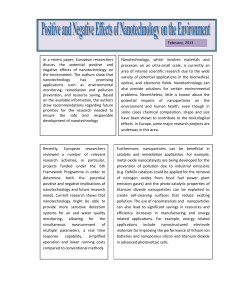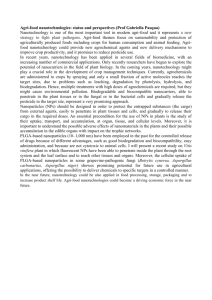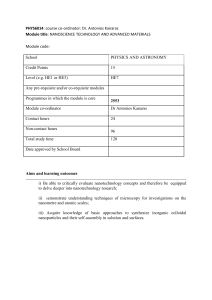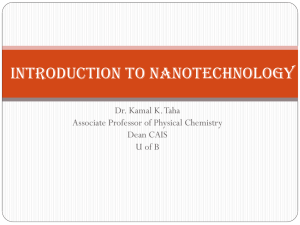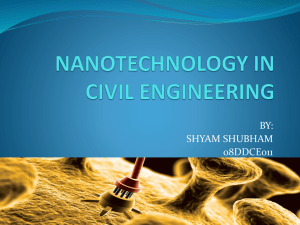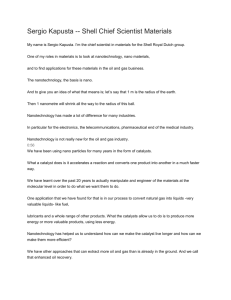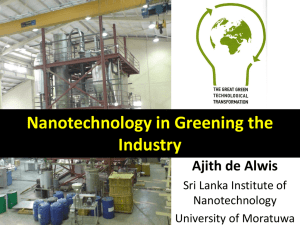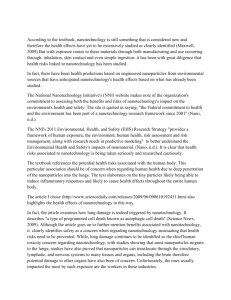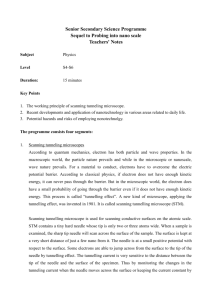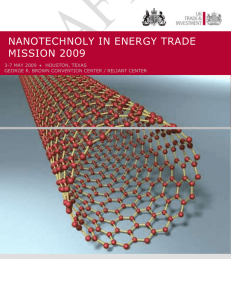Nano`s Big Future Reading 1 What do you know about
advertisement
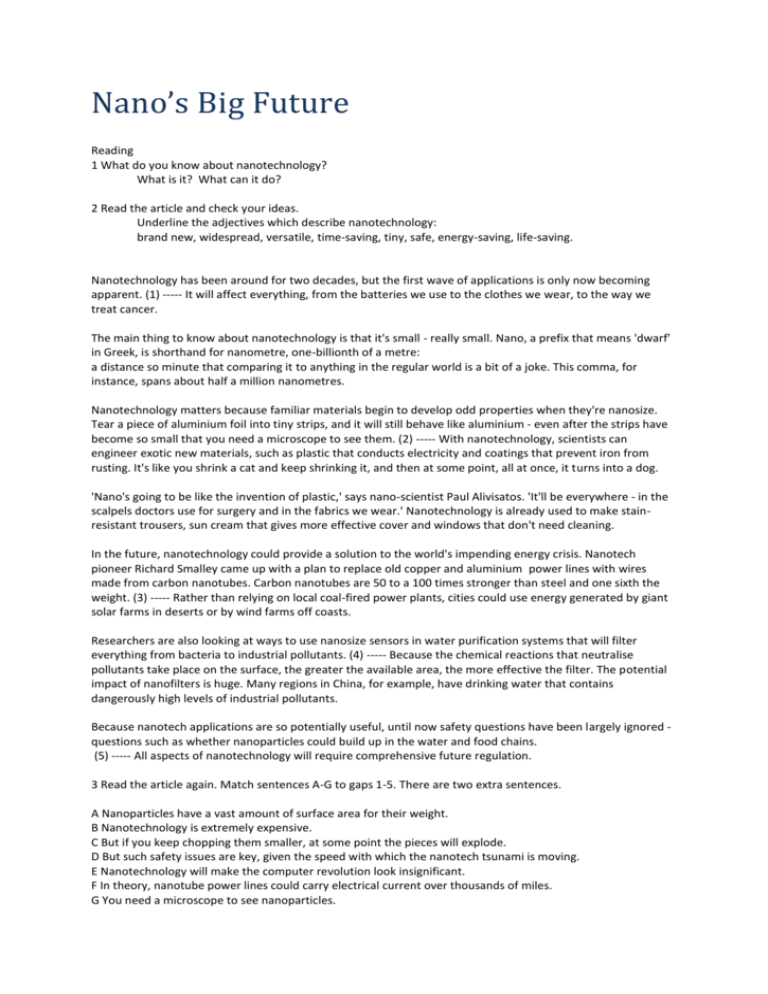
Nano’s Big Future Reading 1 What do you know about nanotechnology? What is it? What can it do? 2 Read the article and check your ideas. Underline the adjectives which describe nanotechnology: brand new, widespread, versatile, time-saving, tiny, safe, energy-saving, life-saving. Nanotechnology has been around for two decades, but the first wave of applications is only now becoming apparent. (1) ----- It will affect everything, from the batteries we use to the clothes we wear, to the way we treat cancer. The main thing to know about nanotechnology is that it's small - really small. Nano, a prefix that means 'dwarf' in Greek, is shorthand for nanometre, one-billionth of a metre: a distance so minute that comparing it to anything in the regular world is a bit of a joke. This comma, for instance, spans about half a million nanometres. Nanotechnology matters because familiar materials begin to develop odd properties when they're nanosize. Tear a piece of aluminium foil into tiny strips, and it will still behave like aluminium - even after the strips have become so small that you need a microscope to see them. (2) ----- With nanotechnology, scientists can engineer exotic new materials, such as plastic that conducts electricity and coatings that prevent iron from rusting. It's like you shrink a cat and keep shrinking it, and then at some point, all at once, it turns into a dog. 'Nano's going to be like the invention of plastic,' says nano-scientist Paul Alivisatos. 'It'll be everywhere - in the scalpels doctors use for surgery and in the fabrics we wear.' Nanotechnology is already used to make stainresistant trousers, sun cream that gives more effective cover and windows that don't need cleaning. In the future, nanotechnology could provide a solution to the world's impending energy crisis. Nanotech pioneer Richard Smalley came up with a plan to replace old copper and aluminium power lines with wires made from carbon nanotubes. Carbon nanotubes are 50 to a 100 times stronger than steel and one sixth the weight. (3) ----- Rather than relying on local coal-fired power plants, cities could use energy generated by giant solar farms in deserts or by wind farms off coasts. Researchers are also looking at ways to use nanosize sensors in water purification systems that will filter everything from bacteria to industrial pollutants. (4) ----- Because the chemical reactions that neutralise pollutants take place on the surface, the greater the available area, the more effective the filter. The potential impact of nanofilters is huge. Many regions in China, for example, have drinking water that contains dangerously high levels of industrial pollutants. Because nanotech applications are so potentially useful, until now safety questions have been largely ignored questions such as whether nanoparticles could build up in the water and food chains. (5) ----- All aspects of nanotechnology will require comprehensive future regulation. 3 Read the article again. Match sentences A-G to gaps 1-5. There are two extra sentences. A Nanoparticles have a vast amount of surface area for their weight. B Nanotechnology is extremely expensive. C But if you keep chopping them smaller, at some point the pieces will explode. D But such safety issues are key, given the speed with which the nanotech tsunami is moving. E Nanotechnology will make the computer revolution look insignificant. F In theory, nanotube power lines could carry electrical current over thousands of miles. G You need a microscope to see nanoparticles. 4 Find the words 1-8 in the article and exercise 3. Match them to the definitions A - H. 1 application 2 properties 3 conduct 4 coating 5 wire 6 current 7 chemical reaction 8 pollutant A let something pass through B a change that happens when chemicals C combine a long thin piece of metal D a thin layer which covers something E flow of electricity F practical use of a theory or process G characteristics H something that harms the environment 5 Discuss the questions. 1 What new information about nanotechnology did you learn from this text? 2 How would you describe the future of technology in one word? Explain your choice. 6 Find words in the article which have the prefix nano. Is this prefix used with nouns or adjectives or both? 7 Look at the prefixes of measurement in the box and explain what they mean. Use a dictionary to help you if necessary. micro semi ultra hyper 8 Match the prefixes in exercise 7 to the words 1-12 to make new words. 1 2 3 4 5 6 ----------- link ----------- scope ----------- violet ----------- circle ----------- sound ----------- wave 7 8 9 10 11 12 ------------ colon ------------ active ------------ chip ----------- market ----------- modern ----------- skimmed 9 Complete the text with words from exercise 8. Designed by Olivia Wong at Cornell University this state of the art, (1) --------------- dress and jacket are more than just a fashion statement. There's a line of nanoparticles in a (2) --------------- shape at the top of the dress, visible only under a (3) --------------- . These deactivate harmful bacteria and viruses, protecting the wearer from colds and flu. The jacket contains nanoparticles that can break down air pollutants. Functional clothing is in. In the near future we can expect to see clothes containing (4) ---------------which can collect health data, fabrics that will break down harmful (5) --------------- rays from the sun, and clothes which can generate power for a mobile phone or mp3 player from the wearer's movement.

